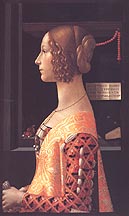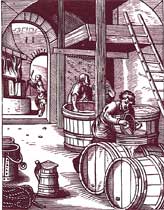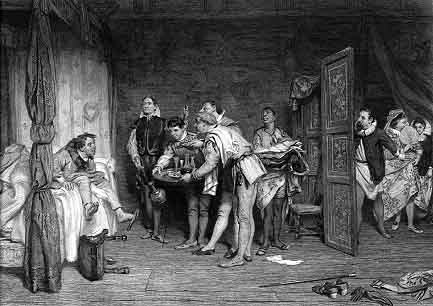Introduction to:
THE TAMING OF THE SHREW
The Introduction starts with a couple of paragraphs, ‘About the Play’.
The first point made, and it is one well worth making, is that this is one of Shakespeare’s most successful and popular plays – in performance. What is dull and complicated on the page becomes lively and clear on the stage.
The second point tries to nail that complicated plot down – it describes the play as … ‘an-action-within-a-plot-within-a-deception’. This phrase is to form the backbone of what follows and, although I have doubts about some of the consequences of the phrase, it is quite a clever way of describing the play and I think it would work well with the teenage readership. I especially like the hyphens.
By restricting this section to two points Ms Gill (the editor) gives the readership every chance of forming a strong foundation of understanding, not only of this play, but of any other Shakespeare texts they will encounter: This is a play, it should be judged in the theatre and its reputation is based on theatre performance. In addition, this play has a theatrical dynamic – a play within a play which constitutes a part of the meaning and is not just a device … the words deception, plot and action resonate.
A final point I’d make here is the publishers have given a whole page to the text – which is remarkably sensitive to the needs of the students. You don’t ‘rush on’, you do stop and think – and there is time to absorb. There are no distractions so the teacher can focus and give full attention to these fundamental points safe in the knowledge that many of the class will be with him/her.
Next we are given the ‘Leading Characters in the Play’. These are split according to the three-part-phrase introduced on the previous page.
 Again, the layout is significant – it reinforces the earlier idea of three levels, but also groups characters in a way which helps point to their interactions.
Again, the layout is significant – it reinforces the earlier idea of three levels, but also groups characters in a way which helps point to their interactions.
Part 1 and Part 3 both have two ‘principle’ characters – and you end up asking the question, are they in some way linked – why two? The first is a deception, the last an action – is there action in the first and deception in the last?
Part 2 and Part 3 have some characters in common – why? This list of characters is not a straight ‘shopping list’ – it is designed to introduce the main roles, the play components and the ‘chemistry’ between them. So Katherina is listed twice – first, in ‘The Plot’, with an emphasis on her temper; then, in ‘The Action’, with the addition of intelligence and independence. Again, you ask the question – why the addition, is it character development or something else – do we have a reflection of the insight Petruccio has in this addition?
As a teacher I could make a lot of use of this page – it allows me not only to point to a couple of upcoming themes but also gives me the opportunity to explore in embryo wider issues and ideas with the students – raising questions which can only be answered by reading the text and watching the play.
We move on to a ‘Synopsis’- this is organised by scene and is relatively straight forward.
But here we come to my first niggle – someone (if I am lucky) is going to ask me what the word synopsis means, and I am going to say, “It’s a fancy way to say ‘the plot’ – the events of the play, what happens, the story.”
“Do you mean it’s the story of the second part – ‘The Plot’?”
“No, Roma Gill, the editor is using the word ‘plot’ there to mean a plan, - they are plotting like criminals or terrorists to do something; here the word means the storyline.”
You, I am sure, get my point – by calling the second part, The Plot, confusion is going to be created … I’d, at this point, go back and get the kids to cross out the word ‘plot’ in the previous pages and replace it with some agreed term, like plan or trick …
The rest of the Synopsis is about as easy to read as any – although I think the vocabulary is a little rich in places and some of the sentences could have been simplified. However, I am not likely to use it in class – not until reading through the play text where each scene has a mini synopsis in the notes at the side anyway.
After the Synopsis comes, The Taming of the Shrew: commentary.
Firmly 1-2-3.d with the foundation phrase, each part is given a good scrubbing making it clean and shiny and easy to follow. We are given helpful (and essential) information – and pointed to obvious things which are far from obvious to the Shakespeare initiate.
For example, Part 1 is clearly stated to be in Shakespeare’s Warwickshire, and the comment is made that there could be reference to real people in the text (Marian Hacket): Great points for question raising in the classroom – why make this part so realistic?
Basic information about social stratification, its reflection in the language use of the play, theatre practise (such as touring productions and boy acting) and even an indication of a sexual innuendo all make great hooks for the student to attach their own thoughts and ideas to and compare what they see with what they read.
Part 2 points to the origins of the plot (and the Plot plan/trick) - the sort of thing that takes Shakespeare away from the ivory-tower isolation of the Bardolators; gives more indication of the need to ‘listen’ to how people are speaking, not just what they are saying; emphasises these are now actors acting being actors; and indicates the interpretation of Baptista’s given in Elizabethan England would possibly be significantly different from ‘modern’ western interpretations.
Twice as much space is given to Part 3 (as expected) and it combines much of the same sort of information as the previous two – social, historical and theatrical context – but going deeper. It also gives a clear line on the development of the wooing – highlighting the 3 kisses and the way they signal different things.
I disagree with the ‘weak ending’ Ms Gill claims, but then, the text I’d use is more complete than the one she has opted for.
Overall, this commentary does its job, and does it well – the attentive student will get a lot from it and will have started to develop a way of looking at the texts of the plays which recognises the theatrical nature of the material and the need to give thought to questions raised rather than look for answers.
The final two parts of the introduction are on Shakespeare’s Verse and Source, Date and Text.
Both can be considered necessary, but dull. I’ve yet to find the writing on Shakespeare’s verse that gives anywhere near the understanding listening to the lines said will – this is no different. What is given is a great chunk of text which is readable ‘out loud’ and will then quickly give all you do need to understand about blank verse.
Source date and Text does make a neat summary – and raises, ever so slightly, the issue of The Shrew vs A Shrew.
Both these sections I am likely to refer back to later on, during an exploration of the text itself … which is what I now need to move on to …
Technorati Tags:
Shakespeare,
Oxford School Shakespeare,
Taming of the Shrew
 the body politic as a family. There is the head of the family, the family itself and, in earlier times at least, the servants. The very powerful combination of man and wife in harmony, with children growing under their protection, operating within a sometimes hostile world is a very strong idea – just look at the galvanizing effect the ‘Republican ticket’ has had.
the body politic as a family. There is the head of the family, the family itself and, in earlier times at least, the servants. The very powerful combination of man and wife in harmony, with children growing under their protection, operating within a sometimes hostile world is a very strong idea – just look at the galvanizing effect the ‘Republican ticket’ has had. on of
on of 
 in the family, rebellion in the state and rebellion of the soul against the heavenly ordained.
in the family, rebellion in the state and rebellion of the soul against the heavenly ordained. I have to start out by making it clear, it was the BBC production of the three Henry VI Plays which got me hooked on the History plays - yes I knew Henry V and Henry IV Part 1, I'd endured Richard the Second and seen
I have to start out by making it clear, it was the BBC production of the three Henry VI Plays which got me hooked on the History plays - yes I knew Henry V and Henry IV Part 1, I'd endured Richard the Second and seen  The three plays as a sequence I will leave until later on - possibly when I have finished the three Henry VIs, possibly when I look at the whole of the history plays.
The three plays as a sequence I will leave until later on - possibly when I have finished the three Henry VIs, possibly when I look at the whole of the history plays. There is a disappointment - it is as if you were to discover the fireworks opening the Beijing Olympics were a computer trick, or the cute girl
There is a disappointment - it is as if you were to discover the fireworks opening the Beijing Olympics were a computer trick, or the cute girl  singing the Chinese national anthem was miming to someone else's voice.
singing the Chinese national anthem was miming to someone else's voice.



 When you pick it up – and that is the first experience many people will have of the full text of any Shakespeare (this is, after all, mistakenly considered one of the easier and safer plays to do with young people) … as I was saying … when you pick it up, it feels good: Not too heavy; clear flexible binding (which state school in England could afford the hardback?); good colourful picture with suitably dramatic facial expressions; clean white paper – which falls open to give a tantalizing glimpse of lots of space and not too intimidating amounts of print.
When you pick it up – and that is the first experience many people will have of the full text of any Shakespeare (this is, after all, mistakenly considered one of the easier and safer plays to do with young people) … as I was saying … when you pick it up, it feels good: Not too heavy; clear flexible binding (which state school in England could afford the hardback?); good colourful picture with suitably dramatic facial expressions; clean white paper – which falls open to give a tantalizing glimpse of lots of space and not too intimidating amounts of print. the time) in execution:
the time) in execution:
 Does Petruccio, when he says he comes to 'wive it wealthily' mean this worldly wealth - or is he saying something else?
Does Petruccio, when he says he comes to 'wive it wealthily' mean this worldly wealth - or is he saying something else?
 So too in England for most of its history - drink water and risk serious disease and death.
So too in England for most of its history - drink water and risk serious disease and death.
 I cannot emphasis the last five words enough for an Elizabethan audience - Petruccio's 'taming' has saved Kate (and himself) from Hell's flames.
I cannot emphasis the last five words enough for an Elizabethan audience - Petruccio's 'taming' has saved Kate (and himself) from Hell's flames. London, Pet Shop Boys trying to pay me back for wood I'd bought on their behalf, a clamped delivery van and ever-lengthening queues to buy tickets for the London Underground whilst a woman I knew 'grilled' the ticket seller for information about times and place to for a Christian 'Timeout".
London, Pet Shop Boys trying to pay me back for wood I'd bought on their behalf, a clamped delivery van and ever-lengthening queues to buy tickets for the London Underground whilst a woman I knew 'grilled' the ticket seller for information about times and place to for a Christian 'Timeout". In the former play, it is words words words - a bit of word-play, verbal fencing, wit for wit's sake; here there is something serious underneath.
In the former play, it is words words words - a bit of word-play, verbal fencing, wit for wit's sake; here there is something serious underneath. understanding the intent.
understanding the intent.
 domesticated.
domesticated. 



